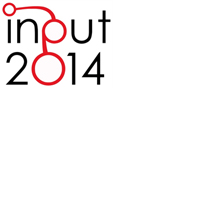Digital Social Networks and Urban Spaces
Abstract
The goal of this paper is to explore how available data from digital social networks can be used to understand ongoing collective actions on urban micro spaces. For this we analyze two cases, one in Brazil and the other in Italy. We propose to conduct an exploratory exercise about group discussions in digital social networks interactions on issues that affect the use of residual public spaces as a way to understand how collective actions are trying to modify urban environment. Aiming to verify the possibilities of analysis of this kind of interaction we made a study of digital urban movements in two cities: Salvador (Brazil) and Potenza (Italy). Such study aims to perform social networks analysis from groups and interactions on digital communities. This permits to test specific research methods to understand how groups and individuals are articulated for qualify cities micro environments, by using digital social networks platforms as a way to improve public participation in a broad sense.Downloads
References
Antoun, H. (2008), “De uma teia à outra: a explosão do comum e o surgimento da vigilância paticipativa”. In: Antoun, H. (org.) Web 2.0: participação e vigilância na era da comunicação distribuída. Rio de Janeiro: Mauad, X. 11-28.
Appel, A.P., Hruschka Jr., E. (2010), “Minerando a Web por meio de Grafos – da teoria às aplicações”. In: Pereira, A., Pappa, G., Winckler, M., Gomes, R. (Orgs.), Tópicos em Sistemas Colaborativos, interativos, multimídia, web e banco de dados. Sociedade Brasileira de Computação, 1. 101-130.
Barabási, A., Bonabeau, E. (2003), “Scale-Free Networks”. Scientific American, 288, 50-59.
Carpentier, N. (2012), “The concept of participation. If they have access and interact, do they really participate?”, Revista Fronteiras – estudos midiáticos, 14, 2: 164-177.
Castells, M. (2000), The rise of the network society. Oxford: Blackwell Publishing.
Gomes, W. (2005), “Internet e participação política em sociedades democráticas”. Revista FAMECOS, 27: 58-78.
Gordon, E. (2008), “Towards a theory of network locality”. First Monday, 13, 10.
Latapy, M., Magnien, C., Del Vecchio, N. (2008), “Basic notions for the analysis of large two-mode networks”. Soc. Networks, 30: 31-48.
Maistrello, S. (2007), La parte abitata della Rete. Milano, Tecniche Nuove.
Murgante, B. (2013), “Wiki-Planning: The Experience of Basento Park In Potenza (Italy)”. In: Boruso, G., Bertazzon, S., Favretto, A., Murgante, B. and Torre C. M. (eds.), Geographic Information Analysis for Sustainable Development and Economic Planning: New Technologies. IGI Global. 345-359.
Pereira, G.C. (2009), “Informação Geográfica, Interatividade e Participação Pública”. In: PRODEB. Internet, participação e interatividade. Relatório Técnico Preliminar. Salvador, 45-59.
Parviainen, O., Poutanen, P., Salla-Maaria, L., Rekola, M. (2012), Measuring the effect of social connections on political activity on Facebook, (mimeo).
Poplin, A., Pereira, G.C., Rocha, M.C.F. (2013), “The Participatory Cube: A Framework for Analysis of Online Participation Platforms”. Lecture Notes in Geoinformation and Cartography. Berlin: Springer Berlin Heidelberg. 395-414.
Rustad, E., Sæbø, Ø. (2013), “How, Why and with Whom Do Local Politicians Engage on Facebook?”, in Wimmer, M.A., Tambouris, E., Machintosh, A. (eds.), Eletronic Participation 2013. 5th IFIP WG 8.5 International Conference, ePart 2013. Koblenz, Germany. Proceedings. Lecture Notes in Computer Science, 8075. 69-79.
Silva, S.P. da (2009), Estado, democracia e internet: requisitos democráticos e dimensões analíticas para a interface digital do Estado. Tese de Doutoramento em Comunicação e Cultura Contemporâneas, Universidade Federal da Bahia, Salvador.
van Dijk, J.A.G.M. (2012), “Digital Democracy: Vision and Reality”. In: Snellen, I., Thaens, M., van De Donk, W. (eds.). Public Administration in the Information Age: Revisited. Amsterdam: IOS Press. 49-61.
Wasserman, S., Faust, K. (1994), Social Network Analysis: Methods and Applications. Cambridge, Massachusetts: Cambridge University Press.
Recuero, R. (2009), Redes sociais na internet. Porto Alegre: Sulina (Coleção Cibercultura).
Rieder, B. (2013), Studying Facebook via Data Extraction: The Netvizz Application. ACM WebSci. Paris, France: May. 346-355.
Watts, D., Strogatz, S. (1998), “Collective dynamics of 'small-world' networks”. Nature, 393. 440–442

Copyright (c) 2014 Tema. Journal of Land Use, Mobility and Environment

This work is licensed under a Creative Commons Attribution 4.0 International License.
Authors who publish in this journal agree to the following:
1. Authors retain the rights to their work and give in to the journal the right of first publication of the work simultaneously licensed under a Creative Commons License - Attribution that allows others to share the work indicating the authorship and the initial publication in this journal.
2. Authors can adhere to other agreements of non-exclusive license for the distribution of the published version of the work (ex. To deposit it in an institutional repository or to publish it in a monography), provided to indicate that the document was first published in this journal.
3. Authors can distribute their work online (ex. In institutional repositories or in their website) prior to and during the submission process, as it can lead to productive exchanges and it can increase the quotations of the published work (See The Effect of Open Access)
